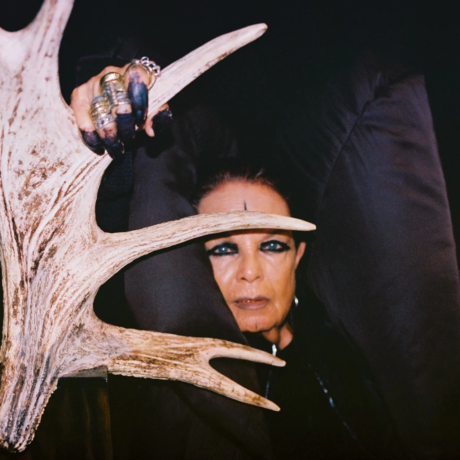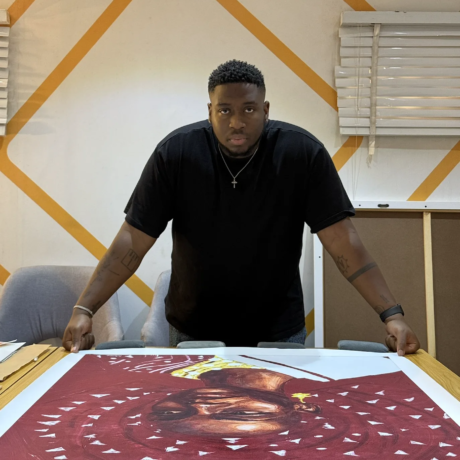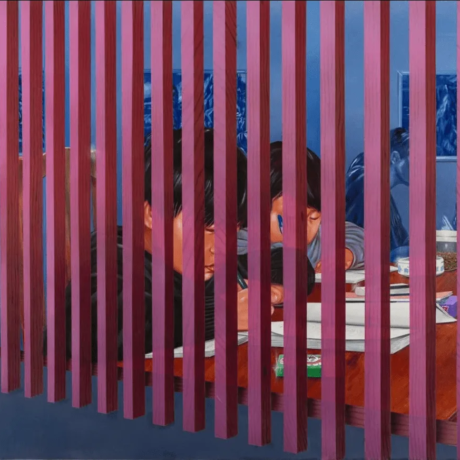Elephant writer Katrina Nzegwu explores the significance of Notting Hill carnival with a little help from Mattia Guarnera-MacCarthy and Marcus Jefferson. Please note that Marcus Jefferson’s words are intentionally capitalised as per the artist’s preference when discussing this subject.
“Carnival means bringing a lot of people worldwide together, we’re a meeting point.” So says Mikey Dread of the infamous Channel One – a cross-generational Notting Hill Carnival mainstay, and one of the UK’s most legendary sound systems. Established in the early 1980s, the ethos of Channel One is rooted in collective responsibility: the understanding that sound system culture is more than just hi-fis and stereos, but a question of bestowal, and benefaction.
We start with Channel One as my most enduring memories of Notting Hill Carnival – sun soaked revelry on the corner of Leamington Road Villas and Westbourne Park Road – but also exemplary of the very roots of the festival itself: a symbol of the capacity of marginalised communities overcoming, and coming together, in power and for posterity. Carnival was born out of resistance and resilience, with the first iteration taking place in 1966. Since the 1950s Notting Hill had been marked as a site of segregation, with the decade plagued by a series of violent race riots particularly targeting residents of West Indian heritage – many of whom had arrived in the UK on the Empire Windrush. With the seeds planted by Claudia Jones, a human rights activist hailing from Trinidad, after she broadcasted an indoor ‘Caribbean Carnival’ on 30 January 1959 on the BBC from St Pancras Town Hall, the direct catalyst for Carnival was the deplorable murder of Kelso Cochrane on 17 May the same year. A carpenter of Antiguan heritage, the 32 year old was prematurely killed following a racially motivated attack, with profound ramifications on racial tension in the area. In solidarity and defiance, his funeral was attended by over 1,200 people.
The mantle for the first outdoor carnival that would morph into the celebration most are familiar with today, was taken up by community activist Rhaune Laslett. Laslett’s primary aim was to involve and uplift the Caribbean community in the Notting Hill Area, in allegiance to her desire to alleviate intercultural tension. A success, the salute to multiculturalism, collectivity, and mutual care has evolved over the preceding five decades to an enduringly proudly-community led event: rooted in the Black diasporic and defined by the strength and sauce of the Windrush generation; yet remarkably, incurably and quintessentially “London.”
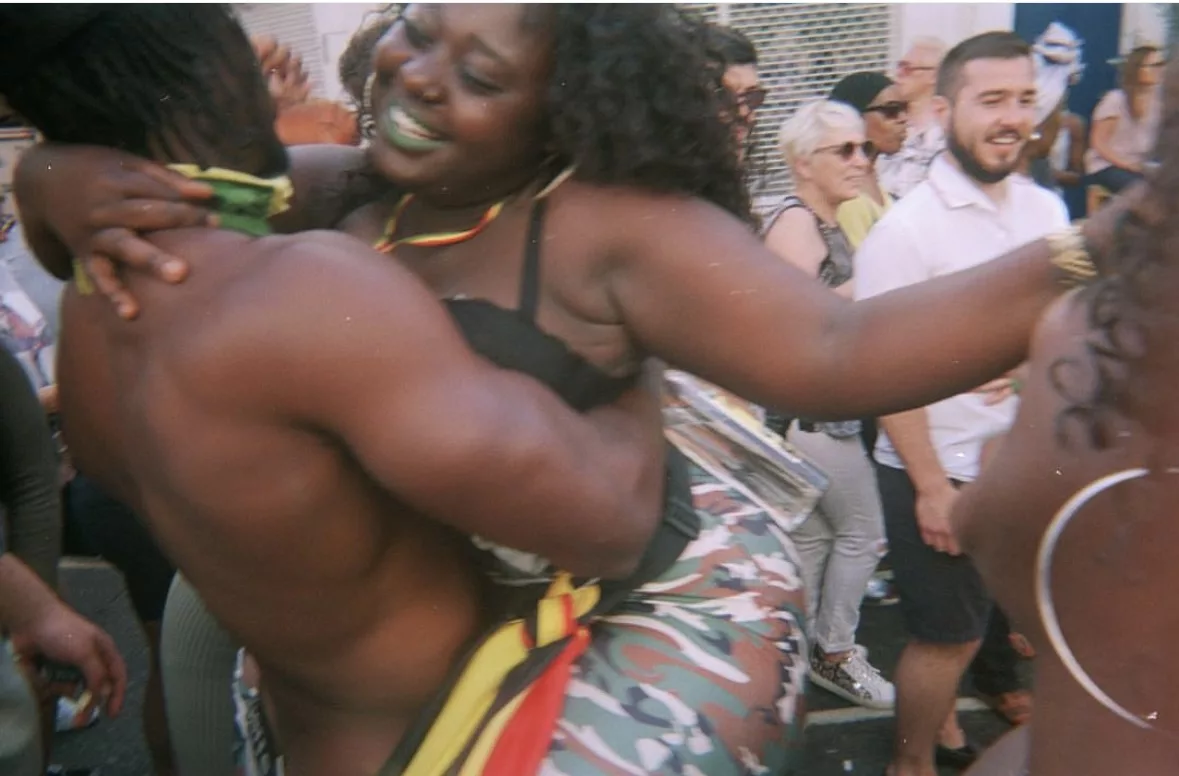
In 2024, the Carnival’s roots hold particular pertinence: plagued by global division, the revisitation of traumatic historical enactments, and an unprecedented spate of hate close to home. For those of us of Black and Brown heritage, the safe space Notting Hill Carnival has striven to provide comes as a particular panacea this year – an opportunity to proclaim our existence and our beauty; to celebrate diasporic heritages and face down those who attempt to diminish and diffuse. A site of formation and foundation, the collective joy Carnival foregrounds for many reverberates across a host of artistic practices: the exploration of the essence of the human condition in a cultural moment that illuminates the many ways we are interdependent; combined with a unique aesthetic lens honed by one’s experience of London. In ode to the pain and persistence enfolded amongst moments of communal celebration, and the myriad ways in which art celebrates these, I had the pleasure of speaking to Mattia Guarnera-MacCarthy and Marcus Jefferson, two artists whose work engages with precisely this confluence – about what Carnival means to them, the echoes of its conceptual legacy throughout their practices, and their top tips for navigating the weekend.
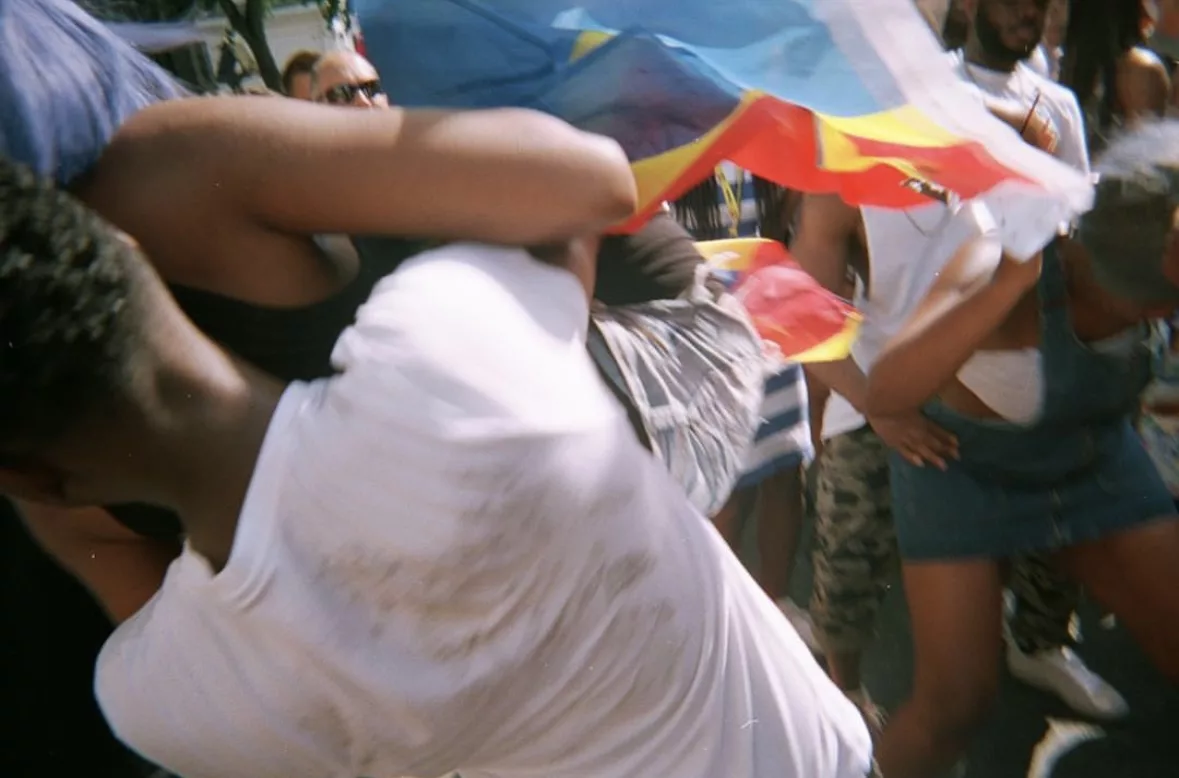
Katrina Nzegwu: Do you remember the first time you visited Carnival? Can you talk a bit about the feeling you experienced?
Mattia Guarnera-MacCarthy: I was a bit of a late bloomer when it came to Carnival. I was probably about 14,15 when I first went. I was completely mind blown; I’d never even been to a festival or anything like that; I’d never seen London transform in such a way.
There’s a group that I always go with – there’s a whole system that we have. We have our meet-up spot, we’ve got everything. It just feels like home really when I’m there.
Marcus Jefferson: BEING LOCATED IN ONE OF THE WINDRUSH AREAS AND ME BEING BORN IN PADDINGTON ST MARYS HOSPITAL, IT WAS ONLY RIGHT THAT I LOVE THE CARNIVAL, FOR THE GOOD AND BAD. WE HAD HELLA FAMILY SCATTERED AROUND WEST AND NORTH WEST AREAS WHICH WE FREQUENTLY VISITED, SO IF I WASN’T BEING DRAGGED OR GOING BY MY OWN CHOICE I WAS THERE! I’VE BEEN GOING SINCE I CAN REMEMBER.
KN: Carnival is inherently rooted in the celebration of the Black (particularly Caribbean) diaspora – the rising above racial prejudice and political pressures to carve out a space for collective healing, cultural diversity and inter community cohesion. Can you talk a bit about what this notion means to you, and how such themes pertain to your artistic practice?
M G-M: Being in a space that feels like it represents myself, and in which I feel spoken for in a sense is fundamental. Although my art doesn’t as directly relate to Blackness as a n experience, I think any Black voice – from Carnival to my own – is important for us. It’s an important landmark; it feels almost like a utopian top up. You get your dose of it for the year, and then you’ve got to wait for the next one. That’s similar to when you go to a great show of a Black artist that really touches you – you feel heard, you feel represented.
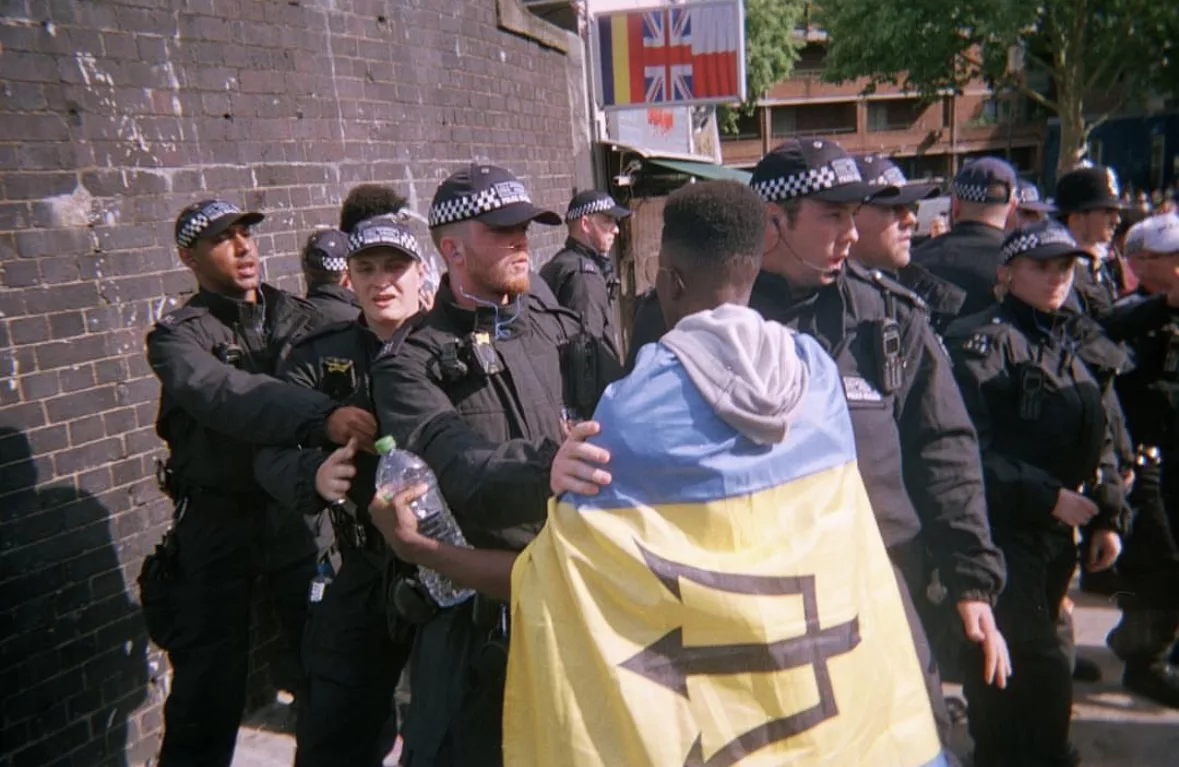
MJ: CHANGE IS A SLOW PAINFUL PROCESS BUT WE MOVE QUIETLY AND STEADY… ITS REAL LIFE SITUATIONS LIKE THIS THAT ALLOW ME TO CREATE NARRATIVES, THEMES & CONCERNS THAT CAN BE FELT THROUGHOUT MY ARTWORKS.
KN: What’s your favourite memory of Carnival to date?
M G-M: That’s a tough question! The chaos of it…I think all of my Carnival experiences have almost blurred into one. Growing up in London the tradition is to just go and have as much fun as possible. There’s always the typical experiences you have when you go; you go there full of angst not really knowing what’s going to happen, and then you get there and have this burst of emotions.
It does feel like a dream state when you’re there in a sense – maybe that’s why I find it hard to identify a particular key moment. Even just the way you navigate through it; you’re never still, you’re kind of floating through it. You never know when one place ends and the next thing starts.
MJ: ONE OF MY STRONGEST (NOT EARLIEST) MEMORIES THAT STUCK WITH ME IS THE TIME THE POLICE SINGLED ME OUT OF A GROUP OF ABOUT 25 WHITE PEOPLE (FRIENDS OF MINE). I WAS STOPPED AND SEARCHED AND THE ONLY THING THAT WAS FOUND WAS 1 HASH SPLIFF…I WAS GIVEN A £90 FINE TO BE PAID WITHIN 2 WEEKS OR A WARRANT WILL BE ISSUED FOR MY ARREST…JOKE TING. THIS EXPERIENCE WAS SAD BUT ALSO COMICAL BECAUSE IT REASSURED ME WHERE WE ARE AT AS A CITY AND WHAT’S REALLY GOING ON OUT THERE EVEN ON SUCH A POWERFUL DAY OF CELEBRATION FOR OUR CULTURE.

KN: A huge part of Carnival is sound system culture. Do you have a favourite sound system/block for music, and why?
M G-M: I think because I’ve got friends who are really on to it, I kind of get dragged around to a certain extent [laughs]. My girlfriend runs a collective 948 which champions Black voices, particularly Caribbean and Windrush influences. Since they’ve had their platform, I take their lead.
MJ: I LIKE TO ENTER FROM KENSAL RISE OVERGROUND STATION AND WALK DOWN TOWARDS PORTOBELLO DIRECTION. THIS WALK IS ICONIC, YOU’VE NEVER SEEN SO MANY WELL MOISTURISED BLACK PEOPLE ALONG SIDE SO MANY WHITE POLICE OFFICERS. WHEN YOU REACH THE ROUNDABOUT BEFORE THE SAINSBURYS TURN LEFT AND FOLLOW A FEW FLOATS SOAKING UP A PIECE OF SOCA MUSIC ALONGSIDE SOME SERIOUS CARNIVAL COSTUMES. WALK AROUND TO GOLBORNE ROAD WHERE YOU CAN ALWAYS CATCH A PAVEMENT SPACE TO KICK BACK, EAT, POOR SOMETHING AND BURN 1. THEN YOUR RIGHT NEXT TO KCC…… LOOK IT UP IF YOU DON’T KNOW BUT FOR ME IT’S A OLD SKOOL SOULFUL HOUSEY 40YRS PLUS CROWD, NICE ENTRANCE BEFORE YOU START THE BUMP N GRIND. ‘WITH CONSENT’. THEN HEAD SAXON, KING TUBBYS & DEVIATION. THERE’S MANY MANY GOOD SOUND-SYSTEMS BUT THIS HAS BEEN OUR PATTERN THE LAST COUPLE YEARS AND SEEMS TO WORK FOR US. IF YOU GOT ENERGY THEN THERES ALWAYS MAD AFTER PARTIES ALL OVER BUT DONT GO TOO HARD BECAUSE THERE’S ROUND 2 THE NEXT DAY.
KN: Just as our communities come together over music and movement, we come together over food. Do you have a favourite food stall, or a particular meal you always get at Carnival?
M G-M: Obviously, go to is jerk chicken. I’ve had a few times a kind of dumpling with jerk chicken, which I wouldn’t typically get if I went to a jerk spot, but it’s a good walking and eating food. Last year I remember getting some ackee and saltfish.
MJ: SUNDAY – ACKEE AND SALTFISH, RICE AND PEAS, PLANTAIN, SALAD & JERK GRAVY ON THE RICE. MONDAY – LARGE JERK CHICKEN PORTION PLANTAIN AND A COUPLE VEG PATTIES TO ROLL WITH AND SOAK UP THE NIGHT BEFORES TOXINS.

KN: What would your top tip be for someone attending Carnival for the first time?
M G-M: It’s funny; I was speaking to someone yesterday who hasn’t gone, and they were antsy about it. I was trying to convince them – I think obviously there’s the apprehension about the crowds, and things going off and what not, but I think when you live it in the moment it’s completely different. All that stuff is a byproduct of the enjoyment. It’s only a credit to how much fun it is that you have to go through all these obstacles, in a sense.
So I would say just go and enjoy it. I love the way the train drops you off, and you just arrive in the middle – from then on the ball’s in your court how you want to play it. There’s two pathways; you can go left or right and then from there Carnival just kind of eats you up and spits you back out. You can’t worry too much – once you’re there, that’s all there is.
MJ: IF YOU DON’T LIKE WEED SMOKE THEN DON’T ROLL CARNIVAL BECAUSE NUFF SPLIFFA BUN.
Words by Katrina Nzegwu


